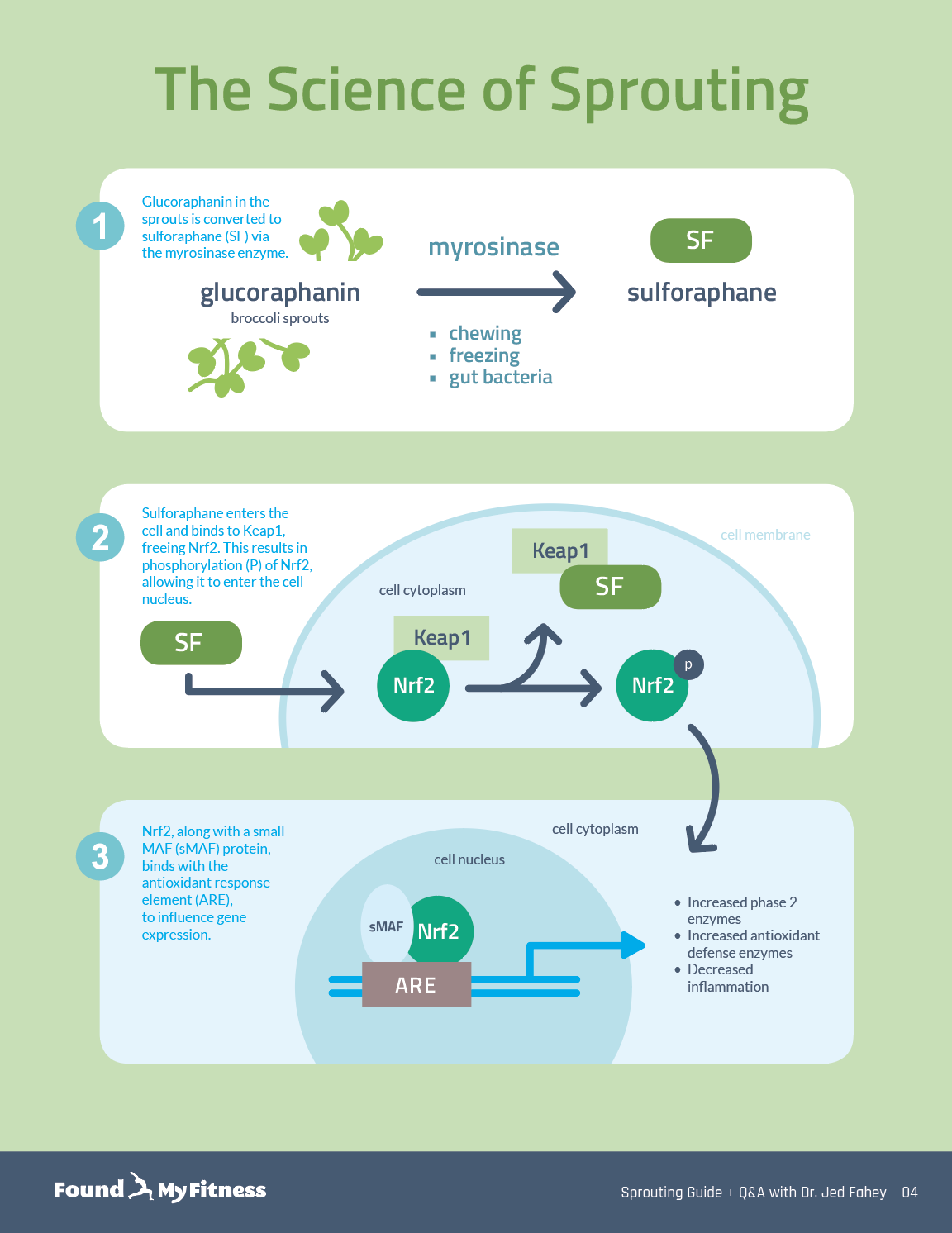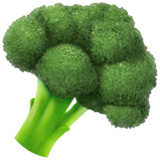How to Grow Broccoli Sprouts
Enter your email to get our 15-page guide to sprouting broccoli and learn about the science of chemoprotective compount sulforaphane.
Broccoli sprouts are concentrated sources of sulforaphane, a type of isothiocyanate. Damaging broccoli sprouts – when chewing, chopping, or freezing – triggers an enzymatic reaction in the tiny plants that produces sulforaphane.

Nearly 30 years ago, scientists at the Johns Hopkins University discovered that sulforaphane, a compound derived from broccoli, induces a host of cellular enzymes that protect our bodies from a wide range of diseases, including cancer, cardiovascular disease, and Alzheimer's disease. They soon learned that sulforaphane is an artifact of isolation – the byproduct of a chemical reaction between an enzyme called myrosinase and a precursor molecule called glucoraphanin.
But it was a later discovered –that broccoli sprouts contain 10 to 100 times more glucoraphanin than mature broccoli – that catapulted these diminutive plants into the limelight of the nutrition world and sent many nutrition-minded people on a quest to sprout their own.
"Broccoli sprouts contain up to 100 times more glucoraphanin, the precursor to sulforaphane, than mature broccoli." Click To Tweet
Sprouting is the natural process by which seeds germinate. Seeds in the wild do it all the time with little effort. Sprouting for the purpose of consuming sprouts, however, requires a bit of finesse and some time and dedication. It also requires a big dose of food safety awareness. That's because seeds are organic products and inherently dirty.
In this instructional episode, we show you all the basics of sprouting broccoli, including:
- The supplies you need to grow broccoli sprouts, like sprouting jars and lids
- How to prepare broccoli seeds, especially when it comes to sterilization
- The steps involved in sprouting broccoli seeds, such as soaking and rinsing, how long you should wait before harvesting broccoli sprouts, and how you should store them.
You can apply these basics to sprouting nearly any kind of seed. But it's important to note that some seeds, such as oats, are nearly impossible to sprout, and others, such as those of tomatoes, peppers, and related plants, yield toxic sprouts that should not be eaten.

The video serves as a companion to our 15-page Sprouting Guide + Q&A with Dr. Jed Fahey – an illustrated manual to the basics of sprouting that includes a brief summary of the science of sulforaphane plus insights from one of the top researchers in the field of chemoprotection.
For even more information about sulforaphane and sprouting, check out these FMF resources:
Podcast interview: Jed Fahey, ScD, on Isothiocyanates, the Nrf2 Pathway, Moringa, & Sulforaphane Supplementation
Podcast interview: New Omega-3, sulforaphane research, and more! [Dr. Rhonda Patrick on the Kevin Rose Show]
Sprouting resources: Amazon and other online retailers carry an abundance of sprouting supplies, like these easy-to-clean, rust-free jars used in the video. (Disclaimer: FMF does not benefit from the sale of these jars.)
This transcript is reserved for members.
FoundMyFitness Members get access to exclusive content not available anywhere else, including a transcript of this episode.
You wouldn't believe how cool being a premium member of the world's best cross-disciplinary science-focused website and podcast really is.
Get email updates with the latest curated healthspan research
Support our work

Every other week premium members receive a special edition newsletter that summarizes all of the latest healthspan research.
Sulforaphane News
- Sulforaphane extends lifespan and healthspan in worms via insulin and insulin-like growth factor-1 signaling.
- Paul Saladino, MD explains how we may have overstated the health benefits of plants and especially sulforaphane
- NRF2 much of a good thing (December 2017)
- A pilot trial finds sulforaphane treatment increased glutathione levels in the blood & hippocampus region of the brain in healthy people.
- A new study found sulforaphane (found in broccoli sprouts) improved behavior & social responsiveness in children with autism.
















































Great video on this topic! I started my father on his own ‘broccoli sprout garden’ at home using your recommendations and it took a bit to improve the palatable nature of taking these things down but now he’s off to the races.
If you haven’t grown your own, the flavor and consistency is a bit tough in the beginning but quickly you get used to it and the health benefits are more than worth it. Thanks for being a pioneer in this space!! Travis Gerhart, founder of Best Health Co
Really impressed with this video Rhonda. Clear and engaging throughout. Short videos of this kind are great, especially when featuring a mix of evidence and practical application. Great job! Thank you.
Great video, Rhonda. That kind of practical advice/guidance is definitely appreciated, so keep it coming!